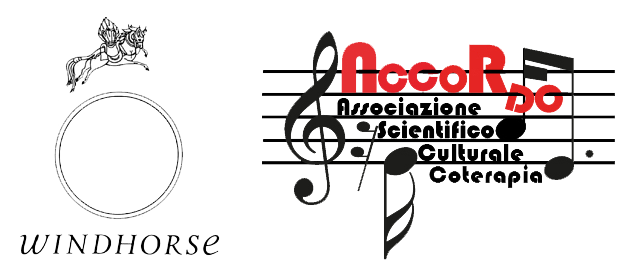Someone Beside You
98 min, color, Dolby Digital, 35mm, 2006, OV CH-German / English
Together with several brave psychiatrists and their patients, the author proposes to shoot a road movie documentary that takes him to Switzerland, Europe and the United States. During their travels in camper, they explore the depths of the human psyche in search of answers to the question: What is the human mind and how to behave in situations of serious mental disorders? When Edgar Hagen meets Edward Podvoll, a Buddhist monk and a graduate in psychiatry, in the United States, Podvoll is only a few months old. His vision / intuition, that courage and friendship have the power to make recovery from mental illness possible, is an inspiring heritage. In a dialogue between Western psychology and Eastern spirituality, a message of hope emerges: it is always possible to rediscover mental lucidity, no matter how deeply confused a mind may have been.
Director’s notes
We are shocked when a person is deeply shaken and loses control. But it can happen to anyone, man or woman, rich or poor, young or old. A relationship that has lasted for many years is falling apart, a child dies … and suddenly even the strongest and most balanced of us can find ourselves in isolation. When this happens, those close to the person usually feel helpless, and often even afraid. Yet when the crisis has passed, there is a tendency to ignore it and pretend that nothing has happened.
Why don’t we know what to do? Maybe it has something to do with the fact that we don’t really know what happens when people have a nervous breakdown and even less about how they come back to “normal”? While over time we have learned a lot about the mechanics of the brain, we still know almost nothing about the human mind and how it works, how it behaves in extreme situations, or how we can bring it back to normal when it is “lost”. Getting to the source of this situation of uncertainty and general lack of knowledge was the challenge launched by this movie.
The movie is about the human mind when it goes through a crisis. I was mainly interested in showing his gradual emergence from the state of nervous exhaustion, rather than the process of disintegration and descent into madness. This was made possible by focusing on a visionary approach that draws on ancient knowledge to derive a new perspective and new ways of dealing with all types of extreme mental distress – and that ultimately affects each of us.
Edgar Hagen.
Main characters in “Someone next to you”
Edward Podvoll / Mingyur Lama (1936-2003) was a psychiatrist, psychoanalyst, and Buddhist Lama. One of his basic principles was “If you have a mind, you can lose it.” Just like Frieda Fromm-Reichmann (who served as a model for the doctor in I Never Promised You at Rose Garden), he was convinced at the beginning of his psychiatrist’s career that healing from psychosis is possible. He regards psychosis as a spiritual crisis rather than an incurable disease as it is considered by most traditional schools of thought. Podvoll’s encounter with the Tibetan Buddhist master Chögyam Trungpa Rinpoche in 1970 and his deep involvement in Buddhist meditation practice reinforces his belief that it is possible to recover from even the most extreme situations of mental distress. In 1974 he became director of the new degree course in Contemplative Psychotherapy at Naropa University, a private humanities institute founded by Trungpa in Boulder, Colorado in 1974.
His experiences with Tibetan Buddhism and a systematic self-experimentation with hallucinogenic drugs convince Podvoll that a “healthy nucleus” resides in every human being and that it is possible to establish a connection with that healthy nucleus even in the most serious states of mental confusion. Windhorse is based on this principle – which Podvoll believes is the key to recovery. Founded by Podvoll in Boulder, in 1981, the Windhorse project aims to treat and promote the recovery of people in conditions of severe mental illness. Fundamental to the Windhorse approach is the willingness of therapists to explore the depths of their mind and develop genuine and sincere contact with their patients, rather than maintaining the detachment that typically characterizes the doctor-patient relationship.
In 1990 Podvoll goes into strict retreat in a Buddhist monastery in France. Even during this period, Podvoll does not consider Buddhism as a religion, but rather as a form of depth psychology rooted in a 2500-year tradition of observation and contemplation of the human mind.
In 1990 Podvoll goes into strict retreat in a Buddhist monastery in France. Even during this period, Podvoll does not consider Buddhism as a religion, but rather as a form of depth psychology rooted in a 2500-year tradition of observation and contemplation of the human mind.
At the end of 2002, Podvoll, who in the meantime is suffering from cancer in the terminal phase, decides to return to the United States and completes the work of his life, surrounded by his followers in the Windhorse project. When Edward Hagen met Podvoll several weeks before his death in the fall of 2003, the two had a series of long conversations. I have documented their meetings with registered, which in a sense is the legacy of Podvoll.
Jakob Litschig (55), a physician, psychiatrist and psychotherapist in Zurich, had psychotic episodes himself. In 1997 he was revoked the authorization to apply following a psychiatric evaluation that evaluates the inability to exercise medical assistance. He is personally committed to seeking alternative solutions in psychiatry that have the ability to radically improve the chances of recovery. Among other things, Litschig is a co-founder of Verband Psychose-and-Psychiatrie-Erfahrene Schweiz (VPECH), an association of “veterans” of psychosis and institutionalized psychiatry, and of the Zurich Psychose-Seminar, a self-help group in where the sick can talk about their traumatic experiences. Edward Podvoll’s work is an important source of inspiration for Litschig in his quest to find new approaches to therapy and treatment.
In the movie, a camper serves as a mobile research and therapy center, in which Litschig accompanies Kaspar, 49, Andrea, 27, and Anonymous, 38 – According to whom the state is followed by psychiatric clinics repeatedly in the over a period of many years – in places where psychosis first hit them. Together, they try to make sense of a phenomenon that is considered incomprehensible and irrational – madness. During their journey through Switzerland and Italy they are resurrecting that both changes are more important than true violence themselves and violence towards others are basically desperate graces of help from human beings who have been driven to point of destruction.
Karen (54) lives in Colorado. He lived his first psychotic episode in college. When she was 21, her family gave her a prestigious private clinic in Kansas, where she was locked up for three years. When the doctors claimed that there was no chance she could recover, she concluded that her only way out of that situation was escape. She jumped from the tenth floor of a skyscraper – and survived. Later she went to Boulder, Colorado, and sought specialist help from Edward Podvoll, a meeting that prompted her to start the Windhorse project. The first “Windhorse Therapeutic House” was founded with Karen and students of Naropa. Karen recovered after a few months and has since lived a self-determined life, without antipsychotic drugs.
Podvoll dedicated an important chapter of his book “The Seduction of Madness” to Karen, an inspired and fascinating account of their common path on the road to recovery.
During Edgar Hagen’s stay with Podvoll in the fall of 2003, Karen and Podvoll met for the first time in many years. Karen has decided to authorize the director to accompany her and film the journey that will have taken her back to the places of her traumatic experiences.
Lama Lhundrup / Dr. Tilman Borghardt (47) is a physician and head of the retreat center at the Tibetan Buddhist monastery Dhagpo Kundreul Ling in the Auvergne region of France. He spent three years with Edward Podvoll in a rigorous group retreat. Both in his work as a doctor and in the head of the retreat center, Lhundrup has witnessed individuals who have had psychotic experiences during their spiritual quest. Like Podvoll, he defines psychosis as an extreme state of mind. He believes that understanding and understanding his own extreme states can open the door to recovery, even in cases of severe psychosis and the so-called chronic schizophrenia. As Lhundrup says, “This ancient knowledge is lost in the Western tradition; we are deeply alienated from it.” In the movie Lhundrup shows us Podvoll’s research for self-research and clarifies the new perspective of Podvoll opened: the synthesis of Western and Eastern psychology. This approach does not concern the appearance of pathologies, but helps people to observe the healthy eyes of their personality, even during severe mental crises.
Eric Chapin (51) is a psychotherapist on the Windhorse project in Boulder, Colorado. During the thirteen years he worked as a forensic psychiatrist in El Paso, Texas, he faced incredible suffering. In the mid-1980s, he came across an article by Edward Podvoll in a magazine and decided to go to Boulder to study with Podvoll, hoping to learn from him how severe psychic suffering – or psychosis – can be transformed. He then held the psychosis course at Naropa University for many years as a successor to Edward Podvoll, and today is one of the most experienced psychotherapists on the Windhorse project. The movie contains a scene in which Chapin and Podvoll delve into their new approach to psychotherapy.
His unshakable faith in the essential sanity and intelligence of his patients, even the most severely disturbed, feeds on regular retreat periods that he practices in an old school bus in the wild desert of the Rocky Mountains, inspired by Podvoll’s example. The movie accompanies Chapin in his fascinating daily tour. We see him visiting Susan (51) in his home, a patient who refused to talk to him for many years. Now we hear the two reflect on the purpose of their sessions together. They accompany him while visiting another patient, Jonathan (47). Hospitalized and sentenced to jail several times over a 20-year period, Jonathan is now able to talk about his experience with self-awareness and confidence.
Finally, the movie takes us back to Eric Chapin’s school bus, where Podvoll’s ashes rest in a small orange urn since his death in December 2003.




